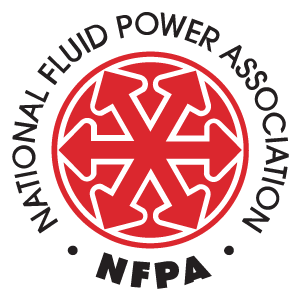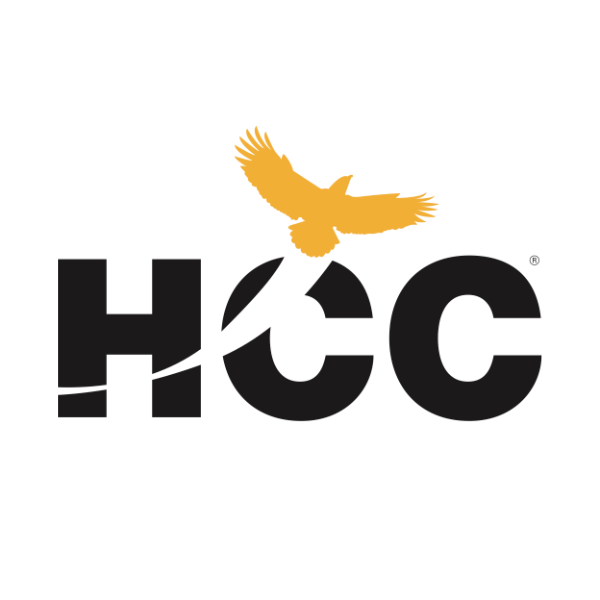A new publication, the 2023 NFPA Technology Roadmap: Improving the Design, Manufacture and Function of Fluid Power Components and Systems, has been published by the National Fluid Power Association. Copies can be downloaded after a brief registration process on our website.
Every other year, the National Fluid Power Association (NFPA) engages with stakeholders across the fluid power supply chain to refresh and re-publish its Technology Roadmap for the Fluid Power Industry. The NFPA Roadmap is a document that describes the evolving needs of companies in fluid power’s many customer markets, the degree to which fluid power is capable of meeting those needs, and the R&D objectives that will help fluid power meet or better meet those needs in the future.
The process is overseen by the NFPA Roadmap Committee – which for this cycle was chaired by Bradlee Dittmer of NORGREN and vice-chaired by Steve Meislahn of Sun Hydraulics/Helios. The committee and its several working groups met multiple times over an eight-month period of time to review the results of numerous stakeholder surveys and to develop the various elements of the new Roadmap. Among its many findings are the following eight Customer Strategies, the primary machine-level objectives or technologies that are currently being deployed to help machine builders in fluid power customer markets achieve their performance objectives.
- Autonomy. Either semi- or fully-autonomous functions and/or operations.
- Compactness. Increasing power density and/or reducing weight and/or size.
- Connectivity. Expanding the use of data, such as intelligence for cloud-based condition monitoring, integration with site management systems, and/or communicating machine status for other value-added purposes.
- Electrification. Decarbonizing prime movers through a variety of strategies.
- Energy Efficiency. Increasing it; and including strategies to improve battery life and/or charging and to use less energy and/or reduce emissions.
- Maintenance. Making it easier; and including strategies to ease the serviceability of the machine and to increase the availability of repair and replacement parts.
- Materials. Use of conflict and/or environmentally friendly materials in strategic ways to better comply with regulations.
- Noise. Reducing perceived noise levels and/or improving noise pulsation.
The Roadmap also identifies the following eight Capability Improvements as the primary ways in which fluid power systems should seek improvements in order to strengthen its use in and connection to these Customer Strategies.
- Data. Improving ability to monitor, gather, and use data generated from fluid power products and/or systems.
- Ease of Use. Improving ease of use and application of fluid power (through automated control, communications, increased dynamic performance, etc.).
- Energy Efficiency. Increasing the energy efficiency of fluid power products and/or systems.
- Environmental Impact. Reducing the environmental impact of fluid power products and/or systems (i.e., leaks, sustainable materials, damage to environment).
- Noise. Reducing the level and harshness of the noise generated by fluid power products and/or systems.
- Power Density. Increasing the power density of fluid power products and/or systems.
- Reliability and Durability. Improving the reliability and/or durability of fluid power products and/or systems.
- Safety. Improving the safe use and application of fluid power products and/or systems.
Specific pre-competitive Research Areas and Targets are also identified to assist in bringing about these improvements. Organizations that wish to pursue projects of importance to the fluid power industry should seek alignment with these Research Areas and Targets.
Special thanks goes to the many partner associations, including some representing key customer markets, whose members participated in the various surveys and committee discussions. These associations include the Association for High Technology Distribution (AHTD), the Power Transmission Distributors Association (PTDA), the Packaging Machinery Manufacturers Institute (PMMI), the Association of Equipment Manufacturers (AEM), and the Association for Manufacturing Technology (AMT).
Eric Lanke, NFPA President/CEO, is available to present the Roadmap and its findings to your group or company. Contact him at elanke@nfpa.com if you have interest.
Like this post? Share it!
Recent Posts
Fall 2024 Fluid Power Recruitment Event with NIU
RSVP for our Fall 2024 Fluid Power Recruitment Event with Northern Illinois University (NIU). NIU is one of seven universities recognized as a Power Partner, teaching fluid power competencies and engaging in all NFPA educational programs. At this event, your company will have the opportunity to connect directly with NIU engineering students. Engaging in meaningful conversations,…
Now Announcing: Cuyahoga Community College as a Fast Track Hub in Ohio
NFPA’s Fast Track to Fluid Power is a workforce development pathway that partners local technical colleges with fluid power industry members and high school teachers. These networks create awareness and interest in fluid power and train students along a path that leads to careers in fluid power at NFPA member companies. We are pleased to…
Now Announcing: Houston Community College as a Fast Track Hub in Texas
NFPA’s Fast Track to Fluid Power is a workforce development pathway that partners local technical colleges with fluid power industry members and high school teachers. These networks create awareness and interest in fluid power and train students along a path that leads to careers in fluid power at NFPA member companies. We are pleased to…



